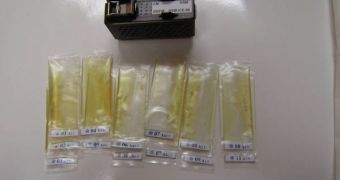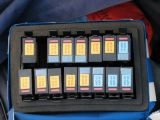Back in 2004, a Soyuz rocket carried aboard the International Space Station a batch of roundworms (C. elegans), as part of a scientific study aimed at evaluating the exact effects that microgravity had on the creatures' physiology and development cycles. In a new study covering the experiments, researchers reveal that these effects are eerily similar to our own, Space informs. Details appear in a paper published in the latest issue of the scientific journal Advances in Space Research.
“At least at face value, this validates that you can use C. elegans to look at mechanisms of muscle atrophy in spaceflight,” University of Nottingham biomedical researcher Nathaniel Szewczyk, who has been a member of the team that compiled the study, says. The expert also adds that the physiological effects of radiation and muscular mass loss in the worms can be used as indicator for predicting the influences of microgravity on human beings as well. This is naturally a good thing, as it means that less humans will have to subject themselves to risky procedures to assess these effects.
The scientist also believes that worms could be launched ahead of humans in expeditions to the Moon or Mars, and that control teams could study what happens to them from a distance, without exposing a human crew to unnecessary risks. Data collected from such missions could help space engineers develop spacecraft and astronaut suits that can withstand whatever harsh conditions these remote places throw at a future human exploration mission.
As part of the International C. elegans Experiment (ICE-FIRST) experts from France, Japan, Canada and the United States selected these roundworms precisely for their similarity to our physiology. Generally, C. elegans is a widely used model organism in a large variety of studies, alongside mice and the Drosophila fly.
In the 2004 mission, 53 specimens were delivered to the ISS, while another batch remained in controlled laboratory conditions back on Earth, to act as control subjects. The overall goal of the research was to establish exactly how microgravity prevented normal muscular protein production rates, a problem that was discovered, along bone density loss, in astronauts returning from long stays on the ISS.

 14 DAY TRIAL //
14 DAY TRIAL // 
